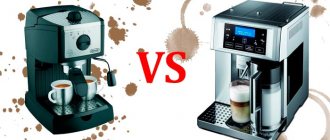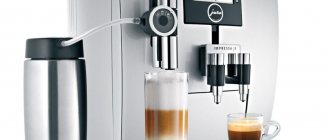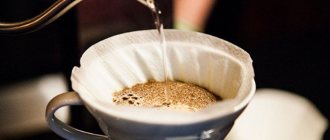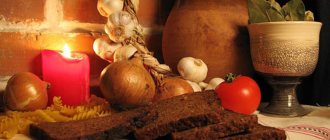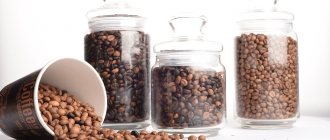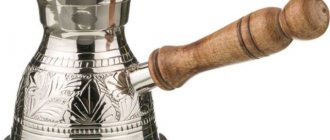The speed and method of preparation depends on what coffee is brewed in. A coffee maker or coffee machine will get the job done quickly. Connoisseurs prepare the drink in a Turk, which reveals the aroma of coffee beans. The original solution is to use a French press or Chemex. If you don’t have suitable utensils at hand, a saucepan or cup will help out. Travelers and people who are often stuck in traffic jams will find portable devices useful. Those who like to experiment will like combined devices.
General information about the devices used
There is more than one name for cookware for making coffee. In the United States of America alone, about eight hundred patents have been issued for various variations of coffee makers. Essentially, all these devices are divided into two types:
- electrical;
- slab
Slabs require heating. The dishes are placed on the stove. Electric ones simply need to be connected to the mains. There are both simple devices that have been used for centuries, and modern units that perform many functions, including grinding beans and choosing the optimal dosage.
What does a cezve look like?
Turkish cezve.
The traditional Armenian cezve is also sometimes called srdjep. There is a related item to the Turkish cezve called dalla. This Arabic word refers to a teapot with a long, curved spout and a single handle, used for brewing coffee, and is common in parts of Saudi Arabia and among Syrian nomads.
Dalla is similar in appearance to ibrik (from Arabic ibriq, from Persian abriz - ab water and riz pour (pour).
Turk
If you answer the question of what coffee is brewed in, the first thing that comes to mind is Turk. Indeed, the oldest and most simple way of preparing a coffee drink, which is still widely used today, is boiling the beans in a Turk (cezve). Already from the name it becomes clear that this dish was invented in eastern countries. They initially used ordinary saucepans to brew the drink, and then for convenience they decided to remove one of the handles. The one that remained was made longer, curved and flattened.
Over time, the Arabs noticed that if the container at the neck was made narrower and the edges widened, the coffee would be much tastier. Thus, dishes with a thick bottom, a narrow neck and a long handle were invented. She quickly gained popularity all over the world.
Nowadays, Turkish coffee is prepared on a stove (gas or electric). The classic recipe involves brewing in hot sand. The following actions are performed:
- The sand is heated for several hours.
- A Turk filled with coffee and water is immersed in it up to the level of the neck.
- When the water approaches the point of boiling, the cezve is quickly removed.
- To fully develop the taste and aroma, such manipulations are repeated 3-4 times.
For those who like to prepare a drink according to the classic recipe, a special electrical appliance has been developed. Visually, it resembles a box filled with sand. When it is turned on, the contents of the container become hot. All that remains is to place the cezve there.
Important! If you have no experience in making coffee, it is recommended to start mastering this process with a copper or ceramic Turk.
Initially, only one type of grain is used. Then you can switch to mixtures and add various spices to the composition.
How to choose?
Ceramics, clay and various metals are used to make Turks. Each of the materials has its pros and cons. Some people prefer practical metal Turks, while others dote on their clay or ceramic “friend.”
A metal Turk is the most durable and unpretentious. After all, the metal will not burst or break, it is easy to wash and clean. Coffee pots are made of copper, silver, aluminum and stainless steel. Copper Turks are the most popular among coffee lovers.
Copper has uniform thermal conductivity, and the Turk itself has the narrowest neck, which is important for making coffee. It is desirable that the copper pot have a special internal coating made of food-grade tin. Turks made from other metals are inferior in quality to their copper counterparts either in heat-conducting properties or in the ductility of the material.
In clay Turks, the taste of coffee is especially unique. Models made from Chinese Yixing clay have high porosity, i.e. are able to absorb the aroma of coffee, making the drink especially tasty. In addition, Yixing clay allows air to pass through well, enriching the coffee drink with oxygen, which allows the aroma to fully develop.
True, the porosity of Yixing clay also has its downside. The fact is that in such a Turk you can prepare only one type of coffee, the one that was brewed in it for the first time. Otherwise, your drink will have a mixed bouquet of aromas of all types of coffee ever brewed in this Turk.
Ceramic Turks are more versatile. You can prepare any type of coffee in them. The quality of the brewed drink in a ceramic pot is very high due to the properties of the material. In addition, the thick walls of the vessel provide a longer boiling process, which continues even after the Turka is removed from the heat.
When choosing a coffee pot, pay attention to the material from which the handle is made. It is desirable that it does not conduct heat, so Turks with a wooden handle are preferable
Little tricks
Coffee was brought from Syria to Istanbul back in 1555, where they began to brew coffee in Turks, which was called in Turkish. To make this coffee, you need to use only finely ground coffee and add spices such as cardamom, anise, cinnamon and cloves.
But how to make Turkish coffee if you have never done it before? To do this, you need to prepare the right Turk, which will correspond to the number of servings being prepared, a stove on which to heat and coffee, ground very finely.
High-quality coffee requires freshly roasted beans. It should be remembered that roasted grains are not stored for a long time, as they lose their extraordinary aroma and taste. It is necessary to grind such beans immediately before preparation, because the best coffee comes from beans that have just been ground. You need to grind very carefully to achieve the finest grind. If the coffee is small, the drink will brew faster and a large foamy cap will form, under which all the beneficial substances, the divine taste and aroma of fresh coffee will be preserved.
To give your coffee a milder taste, you can put a pinch of salt in the coffee pot. It is also important to know that you should not put more ground coffee in a Turkish coffee pot than one or two teaspoons per cup of coffee. This will be unhealthy and excessive bitterness will kill the real aroma and taste of the coffee. Water for coffee should be raw. There is no way to boil coffee, because the foam will collapse and the entire preparation process will go down the drain. When preparing coffee, you must constantly stand near the stove and not be distracted, otherwise you will only ruin the coffee and dirty the stove.
When the coffee is ready, you can add a little cold water to it, then the grounds will settle faster. If you think that the taste of coffee depends on the brand, then you are deeply mistaken. It is important to buy coffee beans and pay attention to the country of cultivation. You should not buy coffee from India or Indonesia. It is best to purchase coffee grown in Central or South America. This coffee is always tasty and aromatic.
If you see that the coffee beans are very dry and have a weak aroma, you do not need to buy such coffee. Most likely he is very old. Also, make sure that there is not the slightest trace of mold on the grains, which happens very often. Good fresh coffee beans should be the same size and color.
Which type of coffee is best for Turkish coffee?
As for the variety, it is best to take Arabica, which is more aromatic, and the grains are quite large and oily. But lovers of strong coffee should choose Robusta, but dilute it with Arabica, it will taste better and there will be a little less caffeine.
To make coffee in a Turk with foam, you first need to heat the Turk a little, and then pour in the coffee and also warm it up a little. Pour in sugar and only then pour in raw cold water in a ratio of 100 ml of water to 2 tsp. coffee. Coffee should be brewed over low heat; as soon as foam rises, the coffee should be turned off. After this, this procedure can be repeated several times. The number of boils depends on the size of the Turk; the smaller the Turk, the less boiling is required. The main thing is that the foam does not burst, otherwise the aroma of the coffee will deteriorate.
In order not to add cold water, you can simply hit the Turk on the table, then the grounds will settle. The color of the coffee will be nut-colored with a light foam. While the coffee is brewing, you need to pour boiling water over the cups to keep them warm, and then pour the finished coffee into them.
In the East, coffee must be brewed with thick foam, because it is believed that if you serve coffee without foam to a guest, you will thereby insult him.
There is one more secret: you need to brew coffee slowly, because if you don’t do this, the coffee will turn out bitter and even sour-bitter. The best crema comes from finely ground coffee. This is precisely why it works.
It takes a long time for the coffee to heat up. Sugar is the best helper for this. In general, sugar slows down the heating process, since it is not the best conductor of heat. Therefore, it is very important in making Turkish coffee. Sugar also helps produce a better crema.
Important! If there are small particles in the finished coffee, this means that the coffee was brewed for less time. So don't speed up the coffee making process.
History of the origin of the cezve
The problem with the golden saucepans was that the drink boiled very quickly and overflowed over them. This fact provoked the appearance of saucepans made of tinned copper with a thick, wide bottom and a narrow neck. The advantages of such cookware were slow heating due to the copper bottom and prevention of runoff due to the narrow neck. They decided to leave the long handle in the new design, similar to an oriental woman.
The narrow neck of the Turk saves coffee from running away
An interesting fact is that such a container was named “rakva”, in honor of the rich nobleman who began its continuous production and sale. Over time, the name “rakva” was forgotten, and the container for brewing the drink began to be called “dzhezva”.
Coffee pot
The Turkish method of making coffee was widespread until the English physicist Raeford invented the coffee pot at the end of the 18th century. Since then, this simple device has been endlessly improved. Coffee pots, which need to be heated on the stove, are still produced today by manufacturers, including luxury tableware, despite the constant modernization of electrical household appliances.
In general, all coffee makers can be divided into two groups: those that need to be heated on the stove, and electric ones. Moreover, the former can be either ordinary or geyser. Coffee makers of the second type, in turn, are divided into drip-type (filtration) and espresso machines, and recently combined ones have appeared.
Italian coffee pot
In a vessel for preparing Moco Express coffee, called an Italian coffee pot, preparing the drink is quite simple, and the result is excellent even for beginners.
- Pour cold water into the lower compartment.
- Place the required amount of coffee powder into the filter strainer, based on the volume of the device.
- Put on fire.
- Wait until the coffee finishes flowing into the upper tank.
- Remove the finished drink from the heat and pour the coffee into a cup.
How to brew coffee in Turkish?
This method includes different options for execution techniques. Let us dwell on the description of the original method.
- Place the vessel over low heat and slightly warm the bottom.
- Pour ground grains at the rate of two teaspoons per one hundred and fifty grams of water. It should be remembered that the taste of the drink is influenced by the quality of the grain. For those who like coffee with sugar, you need to add it to taste at this stage. You can also add a pinch of ground ginger.
- Pour in cold water so that it reaches the narrow part of the neck, and there is still some free space left.
- Place the pan over low heat and under no circumstances bring it to a boil. As the drink boils, a crust will form on the surface, preventing the aroma from evaporating. It cannot be violated. As soon as the crust begins to rise, remove from heat immediately.
The coffee product brewed in this way has a unique taste.
Geyser coffee maker
Geyser coffee makers are very popular, especially in Italy. It is believed that this coffee maker was invented by the Parisian jeweler Jacques Augustin Gandet in 1827, and then improved by the French inventor Durand.
Any geyser coffee maker (designed for making coffee on a stove or an electric coffee maker) consists of three sections. To make coffee, the coffee maker is placed on the stove or an electric heater is turned on. When heated, the water in the lower section forms excess pressure, and steam begins to pass through the coffee in the second section, from where it enters the third section through a special high tube, where it cools and condenses. The coffee grounds remain in the cylinder, and the coffee turns out strong and rich.
Advice! It is better to take coarsely ground coffee; in extreme cases, medium grind.
How much does a geyser coffee maker cost?
First, you should think about finances. Undoubtedly, if you compare the prices of moka coffee makers with the cost of automatic coffee machines, the former will always win. But among the geysers themselves, the price range is quite wide.
For example, some Chinese noname can be bought for mere pennies, but is such a dubious pleasure necessary? If we talk about time-tested brands, then inexpensive geyser coffee makers range from 1000 to 1500 rubles. can be found at GAT The launch model of the famous manufacturer Bialetti – MORENITA also fits into this price range.
The cost of a geyser coffee maker ranges from 1,000 to 10,000 rubles
On average, a classic aluminum coffee maker for 6 cups will cost from 2000 to 3000 rubles. Large-capacity geyser coffee makers (12 or 18 cups) and stainless steel coffee makers will cost more. The most expensive ones will be electric ones with automatic shut-off, temperature maintenance function and other pleasant bonuses. For them you will have to pay from 5,000 to 9,000 rubles.
Which manufacturer should you prefer?
Coffee fans rightly believe that the best models of moka coffee makers are made in their homeland - Italy. The undisputed leader among manufacturers can be called the “progenitor” of all geyser coffee makers – the Bialetti company. The models of this brand include not only classics, but also modern stylish models made of sparkling steel, colored coffee makers, and coffee makers for induction cookers. Bialetti was also able to improve her devices, releasing models with a valve for frothing milk and a valve for frothing cream, like an espresso from a coffee machine.
Italian GAT coffee makers are no less famous in Russia - high-quality, authentic products with an affordable price. Also among the leaders is a large manufacturer of electrical goods, the Italian company De'Longhi, with its electric geyser coffee makers, suitable for both home and office.
You should also pay attention to the stylish coffee makers Ibili (Spain) and BergHOFF (Germany). In terms of workmanship, design and quality of homemade espresso, they are in no way inferior to their Italian colleagues.
Coffee machines
The device is suitable if you need to make coffee quickly and without unnecessary steps. The dishes are expensive, the price starts from 10,000 rubles and can reach 150,000 rubles.
Interesting! Capsule or cereal: which is better? Choosing a coffee machine
In Russia, in particular Moscow, due to the frantic pace of life, coffee machines occupy first place among coffee machines.
To brew a drink in a coffee machine, you don't have to grind beans or heat water. The machine will do all the work after pressing the button.
Details in the article “Design and principles of operation of coffee machines.”
French press
To understand how a French press works, you need to consider the design of the device. The glass flask contained in it has the same diameter in all French presses. But it varies in volume. The higher the glass vessel, the more capacious it is and the greater the volume of liquid it contains. The flask is made of glass, so we can observe from the side how the drink is being prepared.
The container is inserted into a plastic or metal case. A piston that easily moves up and down is attached to the lid, which rotates in a horizontal plane, and serves as a squeezing press. At the base of the piston (plunger) there is a mesh filter, a steel part and a spring, fastened with a bolt.
Brewing coffee occurs as follows: ground coffee is poured into the body and hot water is poured. After five minutes, using a plunger attached to the lid, the sediment is squeezed out: when pressing on the piston, the latter falls down, and the coffee, in turn, falls to the bottom of the flask and is compacted. A clear drink remains on top of it. Everything is quite simple and effective!
Advantages and disadvantages
Like any kitchen appliance, the French press has its pros and cons. True, the number of advantages significantly exceeds the number of disadvantages.
Advantages:
Electric coffee turk with auto shut-off
- The French press is inexpensive. Such a purchase will be affordable even for a person with very modest financial resources.
- The device is easy to clean. This quality will be especially appreciated by experienced housewives.
- A drip coffee maker usually has a paper filter. The French press has a metal filter that prevents sediment and heavy oils from passing through.
- Compactness of the device.
- The strength of the drink can be adjusted by choosing the brewing time yourself. The main thing is to know how much coffee to put in and how much water to pour.
- Preparing a drink in a French press allows you to fully and accurately reveal the aroma of coffee, and its taste becomes “clean”, devoid of foreign flavors and impurities.
- If you prepare coffee using this device, it turns out less thick, without the bitterness and sourness characteristic of a drink brewed in a Turk.
Weak sides:
- A glass flask is a fragile thing and requires careful handling.
- There is no automation in the French press.
- The device is not safe for children.
- You must have a device for heating water on hand.
Minimum required coffee utensils
If you are concerned not so much with issues of following fashion, but with the desire to drink your favorite drink in perfect condition, then you can rest easy - you will not need to open a special coffee bar. Two basic types will be enough.
- Espresso cup . It is better to take a volume of 70 ml. This cup is perfect for drinking oriental coffee and other pleasant recipes. But the volume of 30 ml is definitely not enough for you, especially if you like to make coffee in a cezve.
- Coffee couple . It has a volume of up to 200 milligrams and is suitable for all major types of coffee. The main thing to remember is not to buy into a beautiful and sophisticated appearance. Coffee utensils should retain heat well. Thin porcelain cups simply cannot do this due to large heat loss.
Choose coffee utensils with simple shapes and an elegant, solid color, preferably white. Then cups and sets will always be appropriate, will not get boring and will not go out of fashion.
Drip coffee maker
Drip coffee makers are produced by many manufacturers, but the key elements are the same for all devices. The following are the basic nodes.
- Cold water reservoir. It is often non-removable and is located at the back.
- A tank or boiler in which heating occurs.
- A heating element.
- Funnel and filter for ground coffee. The funnel in some machines is removable. The filter is self-contained and can be disposable or for regular use.
- Container for ready-made coffee. It can be made in the form of a flask, a coffee pot, and sometimes ordinary cups play this role.
Operating principle of a drip coffee maker
Its operating principle has changed little over the past two centuries, although the device has acquired a modern appearance and some additional functions.
- Water from the reservoir, which is usually located at the back, enters the boiler.
- In the tank, the water heats up and rises up the tube.
- Drop by drop it flows through the thickness of the coffee powder and falls into the lower compartment.
- When all the water is heated and drips through the filter, the coffee is ready.
The coffee grounds remain in the filter and do not stain the cups, and the platform on which the tank with the finished coffee is installed can have a heating function and maintain the temperature of the drink.
Despite the similarity, coffee makers from different manufacturers differ in design, volume, materials, and power. The most differences are observed in additional functions: the presence or absence of auto shut-off, delayed start timer, indication, mechanical or electronic control.
Accompanying utensils
Once upon a time it was required by etiquette for every coffee drink. Now the rules have become more democratic, so most of the conventions remain at the discretion of the owners.
Coffee pot
It is appropriate when several people sit at the table. It serves coffee even if some of those present drink other drinks - tea, milk, cocoa. Then everyone will make their own choice. A French press is sometimes used as a coffee pot; it is also acceptable to serve coffee on a common table. In a cezve or turk, the drink is served individually. That is. If you have three guests drinking coffee from a cezve, then you should prepare three servings and serve each one with a set of coffee cups, coffee cups and a glass of cold water. At least that's what the rules of etiquette say.
Milkman
Everything is clear here. Everyone adds milk or cream to the coffee themselves, which is served in a special container.
Coffee spoons
They are given individually to each person and must fit the size of a cup of coffee. Only special spoons are suitable for espresso.
Choose your version of coffee utensils, buy a set or create your own set. The main thing is that you personally enjoy this glassware, even if it differs from the canonical samples dictated by the rules of coffee etiquette.
Espresso machines
According to the degree of automation, espresso machines are divided into:
- Manual (mechanical) espresso machines, in which the required water pressure is achieved through the application of physical force by the operator.
- Semi-automatic espresso machines independently create the required water pressure. Further preparation of the drink is completely controlled by the operator.
- Automatic espresso machines independently create the required water pressure and automatically dose it. At the same time, the operator is still responsible for maintaining the correct proportion and loading of ground coffee.
- Super-automatic espresso machines carry out the entire coffee preparation procedure - from grinding the beans or dispensing already ground beans to pouring the drink into cups.
The most common commercial models of espresso coffee makers fall into the category of semi-automatic, since they combine the relative cheapness and speed of preparing coffee, and also leave ample opportunity to control the taste of the finished drink.
Automatic machines are not widely used in cafes and other establishments because the coffee they prepare does not meet the standards (espresso) developed by the Italian Espresso Standardization Institute. In automatic machines, coffee extraction is much lower due to the inability to achieve the required tamping and pouring time, and the “foam” in automatic machines is obtained by pre-whipping the coffee, and not by extraction as in classic espresso.
Super-automatic machines have become widespread both in everyday life (that’s what they call household machines) and in catering establishments (industrial super-automatic machines), where coffee needs to be prepared in large quantities, there is no specially trained staff (barista) or the ambiance of a classic coffee shop is not required.
Important! Industrial super-automatic coffee machines are much more expensive than regular carob coffee machines, and not all restaurateurs can afford to install such equipment, but in such large chains as McDonalds, Sbarro, Starbucks, etc. they are installed in every restaurant.
Main types of coffee utensils
Choosing the right glassware will help you enjoy your favorite drink.
What is coffee prepared according to various recipes poured into?
Espresso
Small, thick-walled cups with a classic truncated cone shape. Standard volume is 30-40 or 50-70 ml. Thick walls retain heat well and prevent a small portion of the drink from cooling down quickly. Even if you don’t have suitable sized cups in your home, for espresso choose ceramic containers with thick walls and bottom so that the coffee cools more slowly. Then the foam will last longer and the taste will not be lost. Ideally, the dishes are warmed up before serving.
Cappuccino
The cups for this drink resemble tea cups. Standard volume – 170 ml. A prerequisite is the presence of a saucer, since the cup is always full, and ideally, also with a pile of milk foam. Again, it is better to choose ceramics than porcelain. For reasons of heat conservation. Some establishments serve cappuccino in clear glass cups, which is a big mistake. Such dishes are needed for other recipes; cappuccino looks rather dull in it.
Americano
Just a large glass will do. The volume of Americano is larger, approximately 220-250 ml, so the cup needs to be larger.
Coffee cocktails
All lattes, macchiatos and other indulgences are served in heat-resistant glass glasses. Dishes for hot coffee cocktails have handles. There is a distinction between a latte glass and a tall glass. Elongated, with a small handle and a small stand. There are separate utensils for Irish coffee. Essentially a glass cup on a foot. It looks funny, but it is very convenient to drink from.
Cocktail glassware for coffee does not include saucers. Glass glasses are served separately, you can offer stands for them.
Combination coffee maker
Combination coffee makers are actually two models in one. One is a drip coffee maker that can brew a whole liter of coffee, and the other can brew a cup of espresso. Combination coffee makers also have a separate device for frothing milk for cappuccino. Most likely, this coffee maker is suitable for those who cannot decide which coffee they like best: espresso or traditional. Combination coffee makers are very convenient in a small kitchen, as they save a lot of space.
A combination coffee maker is called a coffee machine and can be purchased at any hardware store.
But combination coffee makers have their drawbacks, the main one being that each part of the machine requires specific care and different types of ground coffee. In addition, such devices are not cheap: for the same money you can buy a very decent drip coffee maker and an espresso coffee maker separately.
Which is better to choose?
The conclusions are as follows. It’s more convenient to brew in a coffee maker, but it’s faster in a Turkish coffee maker. In the Turk, as in the geyser coffee maker, they add cinnamon, cloves and other spices according to their taste and desire. A large number of processes occur in a coffee maker that change its natural taste.
Making coffee in a Turk requires attention and skill, and the machine will prepare a delicious drink without human supervision. A geyser coffee maker, unlike a Turkish coffee maker, notifies you of the final stage of preparing the drink with a sound signal (hisses).
The coffee in a geyser coffee maker differs in its density and strength from other coffee makers and Turks - the drink is thick and rich. But a Turk is easier and faster to clean than a geyser and other coffee makers. The geyser coffee maker takes a long time to cool down, and you can get burned while preparing the second portion of the drink. Conclusions have been drawn, and the choice is left only to coffee lovers.
Second way
Before brewing coffee in a saucepan, you should prepare everything you need and follow the instructions:
- Pour the desired amount of powder into a pre-washed and heated ladle.
- Add one dessert spoon of sugar.
- Heat the mixture over low heat for a minute.
- Pour the required amount of clean water into the dishes.
- Cook until characteristic foam appears on the surface, avoiding boiling.
- Pour the drink into heated cups.
